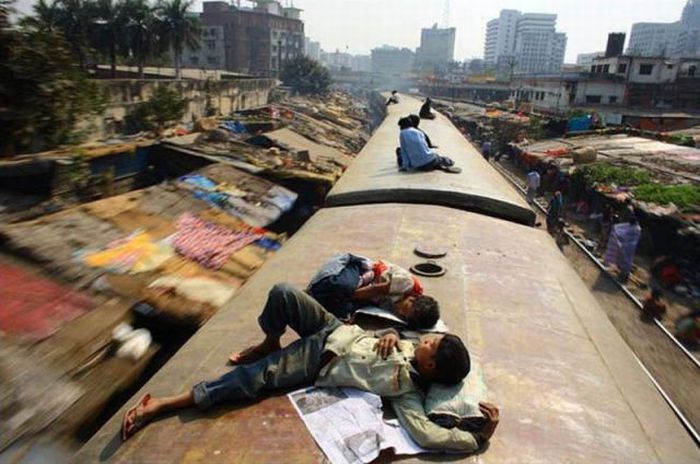|
|
Train Surfing, Bangladesh
|
Train surfing
Train surfing is a common phenomenon and a usual way to ride on the trains in India, Indonesia and South Africa. This practice is a serious issue in these countries where people have been killed or injured in accidents. In the rest of world, train surfing is predominantly practised by young people for testing of courage, getting adrenaline or positive emotions. Sometimes people ride on the outside of trains to travel without a ticket.
With the creation of the internet, the practice of filming the act and posting online videos of it is on the increase worldwide. While there are no official numbers, the London Underground is now running an advertising campaign against "tube surfing". The advertisements now at most underground stations show a female figure with one arm and the caption "she was lucky" next to it.
In Germany, the practice was made popular on TV in the 1990s. There it was called "S-Bahn Surfing". Slowly, the former train surfing culture changed and integrated into the German graffiti culture. The phenomenon was forgotten until the millennium, but in 2005 it was rediscovered by a group from Frankfurt, Germany. The leader of the crew who calls himself "the trainrider" famously surfed the InterCityExpress, the fastest train in Germany. An internet video claimed that he died a year later from an incurable form of leukemia, but later "the trainrider" revealed in an interview of Sat1 Akte 08 that this video was made by a fan and the story of his death was a hoax. S-Bahn Surfing is a risky undertaking - there were 40 dead teenagers in Germany in 2008 alone.
|
|









